How Geosynthetic Clay Liners Prevent Seepage?
A geosynthetic clay liner, often abbreviated as GCL, is a versatile and essential material in engineering and environmental projects. Comprising sodium bentonite, geotextiles, and carrier materials, GCLs serve as robust anti-seepage solutions for artificial lakes, landfills, underground garages, and more. The unique composition of GCLs allows them to create low-permeability barriers that effectively prevent the passage of liquids and gases. Whether in the construction of roof gardens, pools, oil depots, or chemical storage yards, GCLs offer reliability and durability, making them a preferred choice for safeguarding against leakage and ensuring the integrity of structures. Explore the world of geosynthetic clay liners and discover how they play a crucial role in maintaining the stability and security of various engineering and environmental projects.”
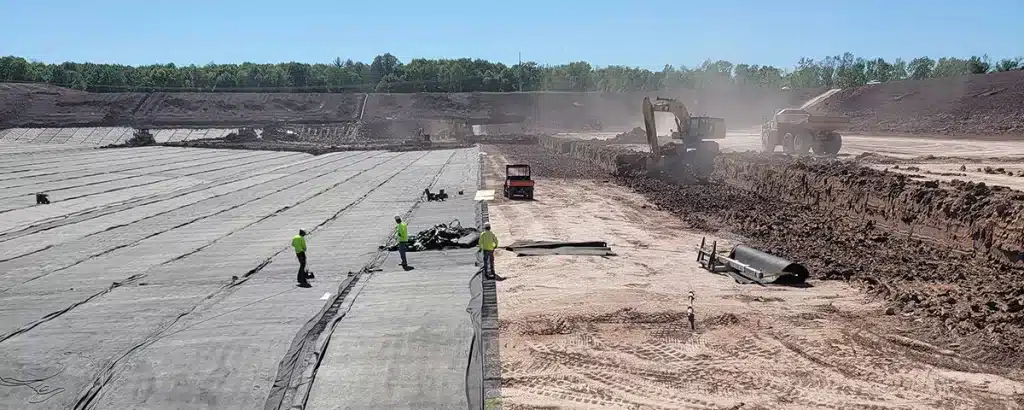
What is a geosynthetic clay liner?
A Geosynthetic Clay Liner (GCL), a kind of geosynthetic material used for anti-seepage of artificial lake waterscapes, landfills, underground garages, roof gardens, pools, oil depots, and chemical storage yards, is a composite material used to create a low-permeability barrier. It’s typically made up of three primary components:
- Sodium Bentonite: This clay material swells upon contact with water, creating a seal that effectively restricts the flow of liquids and gases.
- Geotextiles: These are non-woven or woven fabrics that encapsulate bentonite, providing mechanical strength and protection from punctures through needling, stitching, or chemical adhesives.
- Carrier Materials: These serve as support layers and can be made of materials like geomembranes or geonets.
How do you install geosynthetic clay liners?
Installing a geosynthetic clay liner (GCL) involves several steps:
- Site Preparation: Before installing a GCL, ensure the site is properly graded and compacted. Any sharp objects or rocks should be removed to prevent damage to the GCL.
- GCL Unrolling: Roll out the GCL panels, overlapping the edges to create a continuous barrier. Ensure that the geotextile side faces up and the carrier side faces down.
- Seaming: Join GCL panels by overlapping the geotextile and stitching them together. It’s important to follow manufacturer guidelines for seaming.
- Cover Material Placement: Over the GCL, add a cover material like soil or gravel to protect the liner from damage and prevent UV exposure.
- Quality Control: Regularly inspect the liner during installation to identify and address any damage or imperfections.
- Testing: Conduct integrity testing to ensure the GCL performs as expected.
How does a geosynthetic clay liner work?
Geosynthetic clay liners (GCLs) utilize sodium bentonite, a natural sealant that swells and seals upon contact with water. This swelling action is the key mechanism behind creating a waterproof barrier that effectively halts the passage of both liquids and gases. Complementing this sealing action, geotextile layers offer structural support, while the carrier materials further enhance protection and stability for the liner.
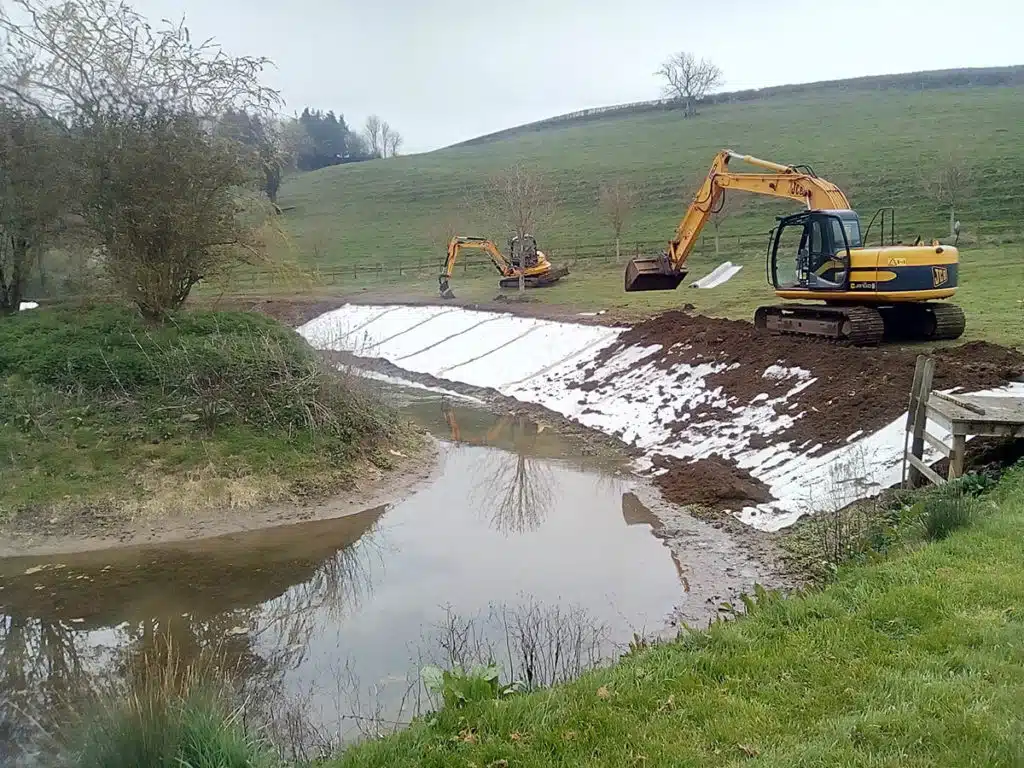
What are the components of geosynthetic clay liners?
As mentioned earlier, GCLs are composed of three primary components:
- A layer of bentonite or other very low-permeability material supported by geotextiles and/or geomembranes: This is the active ingredient responsible for sealing the liner.
- Geotextiles: They protect and encase the bentonite or low-permeability material, adding strength and durability to the liner.
- Carrier Materials: These materials offer additional support and protection for the GCL.
How do you install a clay pond liner?
When installing a clay pond liner, the process bears resemblance to installing a Geosynthetic Clay Liner (GCL), although it predominantly features natural clay material, devoid of geosynthetic components. Here are the essential steps:
- Drain your pond: To begin, empty the pond by removing all the water from it.
- Divide the pond bottom area into smaller squared areas: After draining, divide the pond bottom into smaller square sections to facilitate the even distribution of the clay.
- Distribute the bentonite into the pond bottom area: Spread the clay evenly across the squared sections to create a consistent and effective barrier.
- Compact the bentonite into the bottom of the pond: Employ compaction techniques to ensure that the clay layers are tightly packed, reducing the risk of seepage.
- Fill your pond: Once the clay is securely in place, refill your pond with water.
These steps are vital for successfully installing a clay pond liner, ensuring that your pond effectively retains water without leakage, just as a GCL would in various engineering applications.
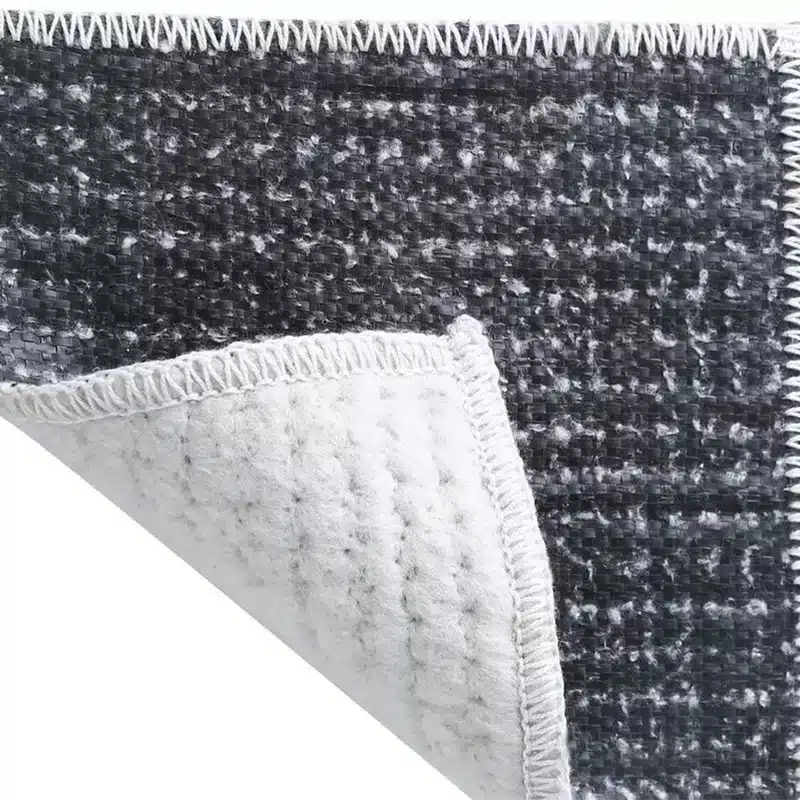
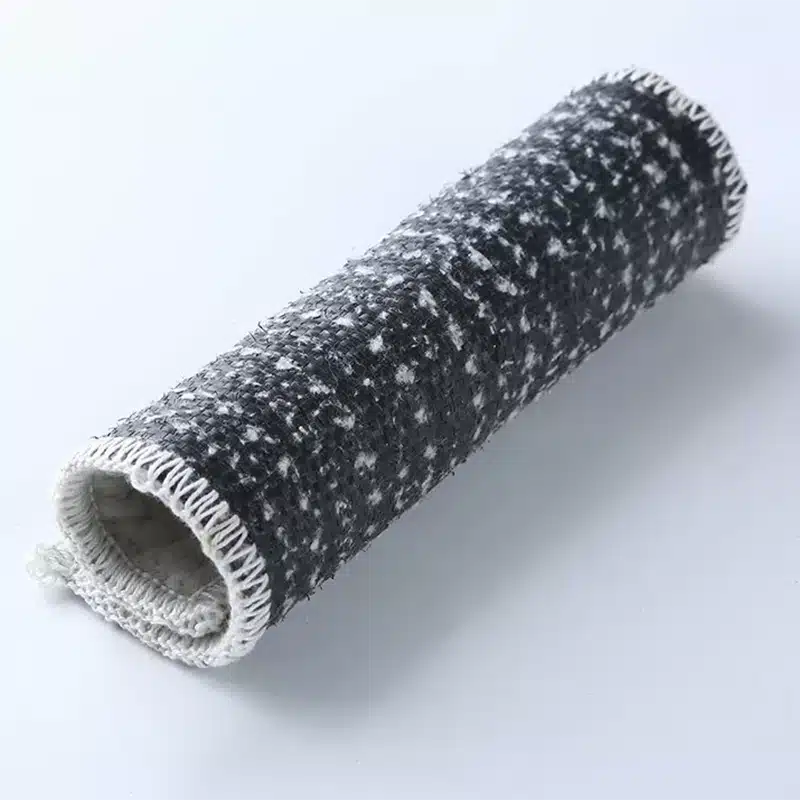
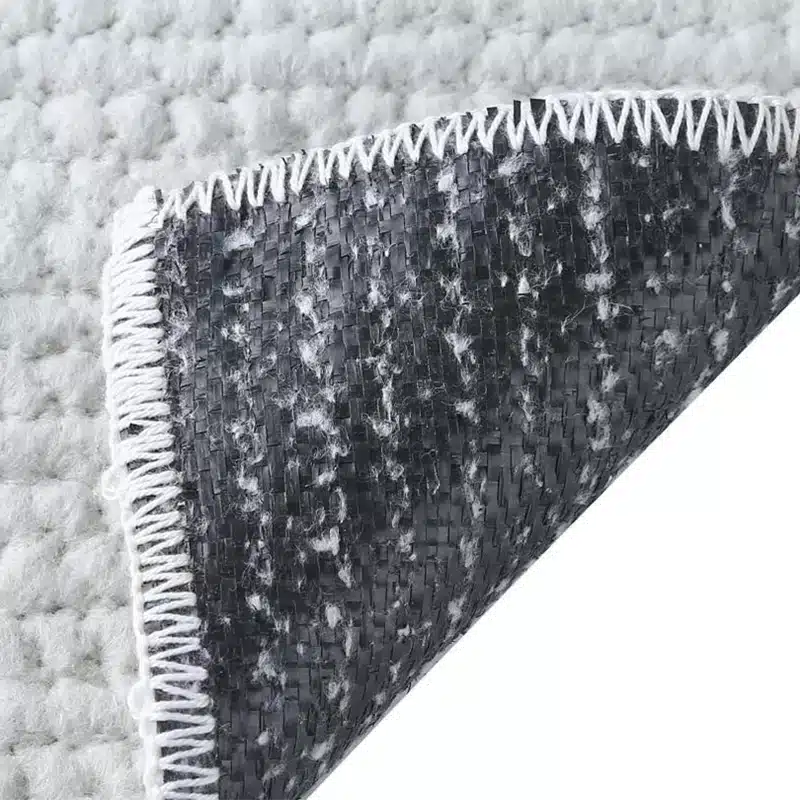
Comments
Post a Comment